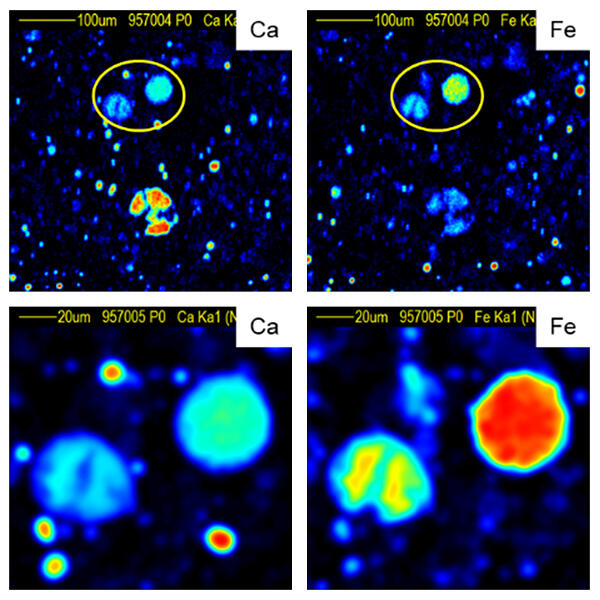A research group led by Associate Professor Yohey Hashimoto of the Department of Bio-Applications and Systems Engineering, Tokyo University of Agriculture and Technology, and graduate student Yuki Nagao of the Graduate School of Bio-Applications and Systems Engineering, Tokyo University of Agriculture and Technology (UBE Corporation (UBE)), analyzed the behavior of trace elements in coal ash (fly ash), a by-product of coal combustion in boilers at coal-fired power plants. The researchers identified the chemical states of elements including boron (B), fluorine (F), chromium (Cr), arsenic (As), selenium (Se), calcium (Ca) and iron (Fe) in coal ash.

Provided by Tokyo University of Agriculture and Technology
To determine the chemical and mineralogical properties of coal ash from different coal-fired power plants, the research group carried out detailed analyses using elemental analysis, leaching tests and X-ray absorption fine structure (XAFS) analysis for trace elements. Particle induced X-ray emission (PIXE) analysis and time-of-flight secondary ion mass spectrometry (TOF-SIMS) were analyzed to determine the distribution state of those elements.
As a result, they have been able to identify the valence of the trace elements and their chemical states in the coal ash and to establish analytical techniques. PIXE had never before been used to analyze and characterize trace elements in coal ash, and the researchers used it to find chromium and arsenic to be unevenly distributed.
While there is a need to effectively use coal ash other than as a raw material for cement, the presence of elements whose leaching into water is regulated when used in a soil environment has been an obstacle to such use. Identifying the chemical state of these elements can contribute to measures and planning.
According to Nagao, "It was difficult to select a suitable analytical method due to the trace amount of the target elements in coal ash, and the complex composition of the elements caused some difficulties because components other than trace elements sometimes hindered the analysis." "Based on the research results, we want to establish appropriate removal and elution control technologies for the above elements, which will lead to the drafting of new guidelines for coal ash treatment and its use. We would also like to expand the scope of application to waste treatment beyond coal ash."
Journal Information
Publication: Waste Management
Title: Characterization of trace elements in coal fly ash by extraction, micro-PIXE, TOF-SIMS, and XAFS
DOI: 10.1016/j.wasman.2022.11.041
This article has been translated by JST with permission from The Science News Ltd. (https://sci-news.co.jp/). Unauthorized reproduction of the article and photographs is prohibited.




